Why Finish Wood?
It may be a chore, but there are good reasons to apply a finish.
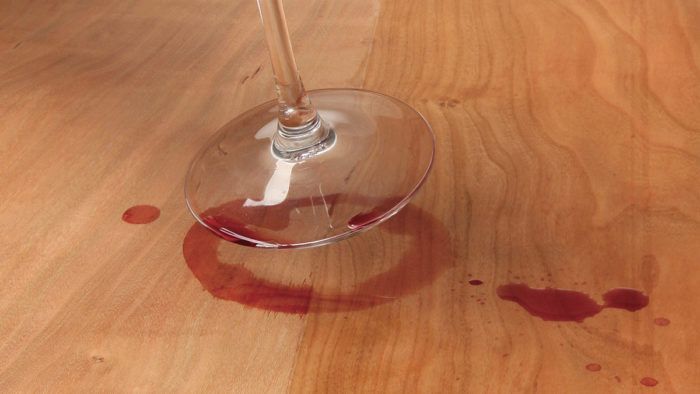
Synopsis: Finishing experts tell you how to apply a finish but they never explain why you should finish wood. Why not leave a piece in its just-planed state showing the wood’s natural beauty? Is it really necessary to go to all that trouble coating your piece with some combination of oil, resin, or plastic? You bet it is … at least in most cases if you want to protect the piece, preserve its joinery, or enhance its looks.
Finishing experts tell you how to apply a finish but they never explain why you should finish wood. Why not leave a piece in its just-planed state showing the wood’s natural beauty? Is it really necessary to go to all that trouble coating your piece with some combination of oil, resin, or plastic? In fact, there are many important reasons for applying a finish—some aesthetic and some practical. A finish can reduce seasonal movement and the resulting stresses on joinery. It also makes a surface more impact-resistant and protects wood from everyday use, whether the piece is a rarely handled picture frame, a kitchen table, or an outside chair. Also, the right combination of dyes, stains, and clear finishes can turn humdrum wood into an eye-catching piece.
And finally, there are some occasions when no finish really is a valid option.
Some finishes slow wood movement
When it comes to protecting a piece of furniture from the damage that can be caused by wood movement, applying a finish is no substitute for careful construction.
Still, certain finishes will reduce wood’s tendency to absorb and release moisture. This in turn will slow seasonal expansion and contraction, reducing stresses that can eventually damage joinery and helping to minimize problems like door panels that rattle in winter or drawers that stick in summer.
Some finishes are better at this than others. No clear finish can match paint at controlling moisture, even over a couple of weeks. Pure oil finishes in particular are ineffective. Spar varnish gives some protection, but the standouts among clear finishes are shellac and polyurethane.
If you do apply an effective moisture-excluding finish, be sure to treat all surfaces equally. otherwise, each side of the surface will absorb and release moisture at a different rate, causing the boards to cup.
Protect the surface
An oil finish is easily renewed. Penetrating finishes like linseed oil or tung oil don’t protect as well as film finishes, but they can be sanded away to repair damage, and then renewed.
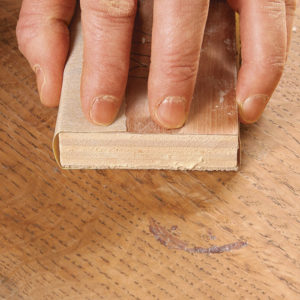 |
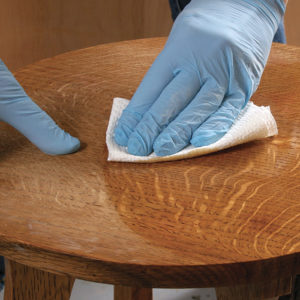 |
Finished wood stays cleaner
No piece stays looking like the day it was made. The surface gets a slightly rough feeling, sunlight oxidizes the surface cells, and hands leave oil and dirt. A clear finish can give wood varying degrees of protection against environmental damage as well as everyday wear and tear.
The need for protection varies by the intended location and use of the piece. If you want the look of natural wood, a rarely handled piece such as a picture frame or an ornamental turning probably only needs a single coat of finish followed by a coat of wax. That’s enough to allow dust to be wiped off and not into the grain.
Tabletops likely to come into contact with food and drink need a finish that can protect the wood. Unfinished, scrubbed-pine tables were fine for the nobles who employed scullery maids, but if you’re cleaning up after yourself, you’ll find that traces of red wine and ketchup are removed far more easily from a durable film finish such as varnish or polyurethane.
Penetrating finishes offer less protection, but minor damage can be repaired more easily by sanding and then wiping on another coat of finish. This easily repairable finish is suitable for surfaces that won’t be subject to frequent damage by liquids. The “easily” is relative when compared to repairing a film finish: It is still quite a lot of work to sand out the damage and apply new finish to the damaged area and possibly the whole immediate surface, so you don’t want to do this once a month to a kitchen table. Almost any other piece, including the tops of occasional tables (especially in an adults-only house), will be fine with a penetrating finish.
No finish is waterproof
If you live where there are wide humidity swings between winter and summer, you should weigh moisture control more heavily in choosing a finish. Use this chart to compare the moisture-repelling properties of common finishes. Each finish was applied in three coats on samples of clear Ponderosa pine. The test pieces—along with unfinished control samples—were then kept in a controlled environment of 80°F and 90% humidity to simulate real-world humidity changes. Afterward, each was weighed and compared against its unfinished control piece to gauge relative water gain.
Enhance wood’s beauty
Yes, beauty is in the eye of the beholder, but even those who hate finishing must have had that moment of pleasure when the first coat of finish lights up the wood. The impact is greatest with highly figured wood—burls, crotches, blister, and ribbon stripe. Finish increases the light/dark contrast and exaggerates the shimmer, or chatoyance.
Applying a finish also increases the contrast between light and dark woods, whether it is walnut drawer pulls, wenge trim, or the mahogany background to holly stringing.
Don’t confine yourself to clear coats: Dyes can really put the tiger in tiger maple, while bright dyes help blister and quilt-figured maple to jump out.
Reveal depth and beauty
Finishing outdoor furniture
Whether to finish an outside piece is rather like deciding whether to dye your hair. You can either accept going gray, or you can apply dye/finish on a regular basis. In both cases, make the choice and then stick with it; neither gray roots nor an outdoor piece with peeling finish are attractive.
A finished outdoor piece is much easier to keep clean and dry. After a day of rain, you can wipe it with a cloth or a towel and you have a surface ready for those white trousers or dresses. An unfinished piece will stay damp for hours or even days after a good soaking and will grow lichen, moss, etc.
Outdoors: To finish or not?
Two ways to survive the great outdoors. To finish his outdoor furniture, Sean Clarke applies multiple layers of epoxy sealer and marine varnish. Or you could take Hank Gilpin’s approach and apply no finish at all.
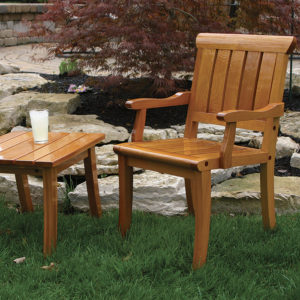 |
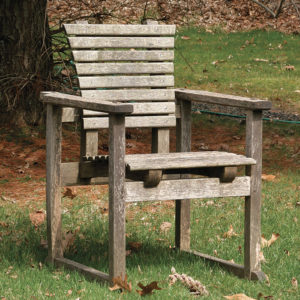 |
Outdoor finishes not only need to withstand the elements but also must allow for far more wood movement than interior finishes. The answer is to use a durable yet flexible finish. Apply many layers of a marine varnish, particularly on end grain. Immediately repair any damage before water can get under the finish, and when the surface loses its shine, apply another coat. If you wait until the finish has begun to crack and peel, the only solution is to go back to bare wood and begin again.
For those determined not to apply a finish, a durable outdoor wood such as teak, white oak, or cedar will give you years of good service before weathering starts to weaken it. You can also avoid finishing some dense, oily tropical hardwoods such as cocobolo or rosewood. Sand them to a high grit and then buff them (on a buffing wheel for small objects) and they’ll retain a medium luster.
Some woods finish themselves

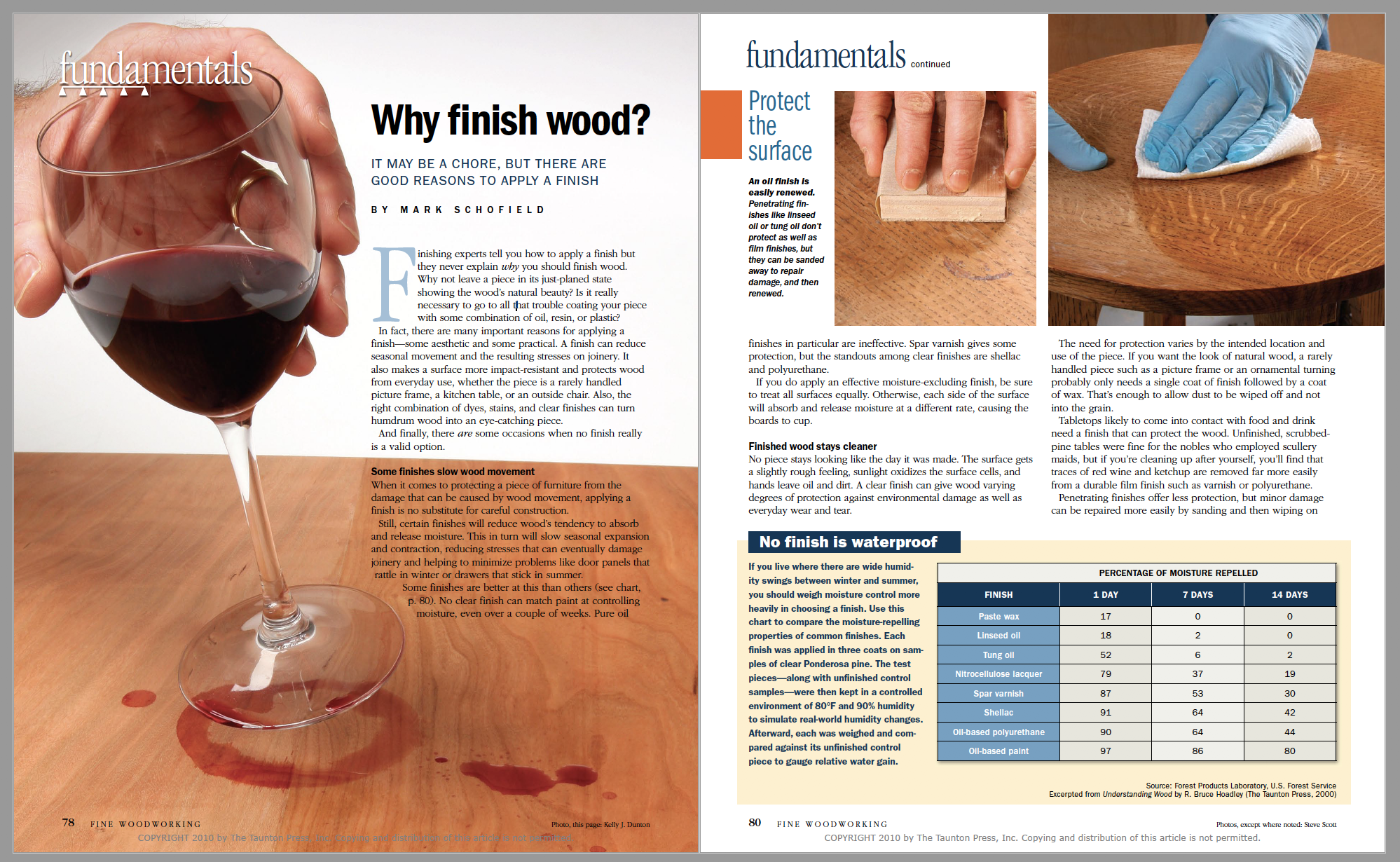
From Fine Woodworking #215
To view the entire article, please click the View PDF button below:
Fine Woodworking Recommended Products


Waterlox Original

Bahco 6-Inch Card Scraper


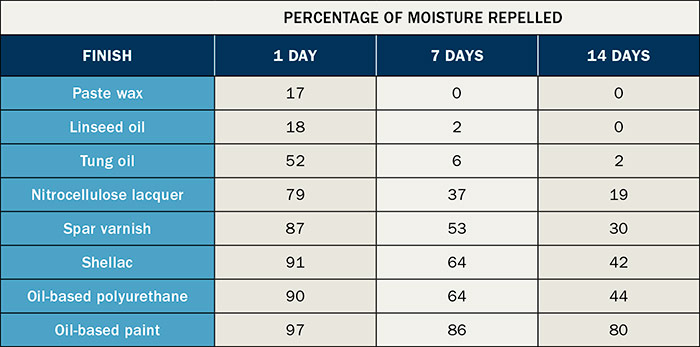
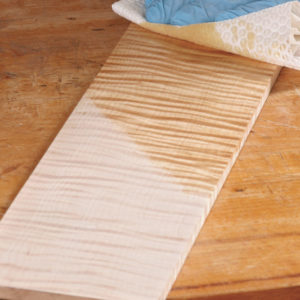
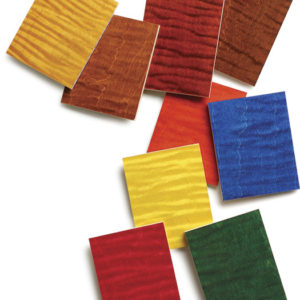






Log in or create an account to post a comment.
Sign up Log in